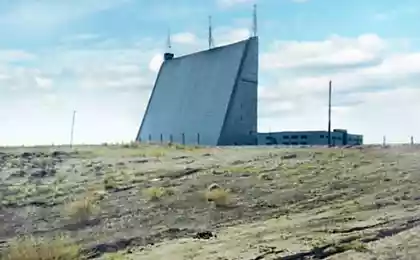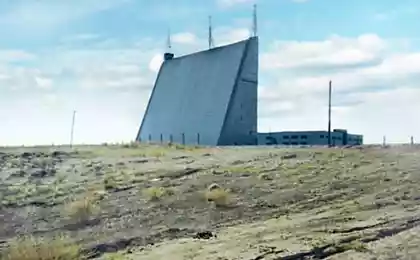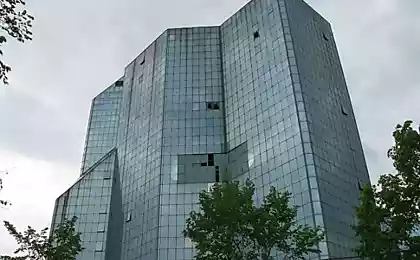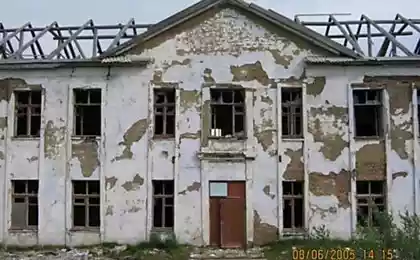4419
Abandoned objects
Classified submarine base, abandoned missile silos, giant excavators, the-horizon radar "Doug" sea town on the platform "Oil Rocks" Hadron Collider Soviet - particle accelerator and the station studying the ionosphere.
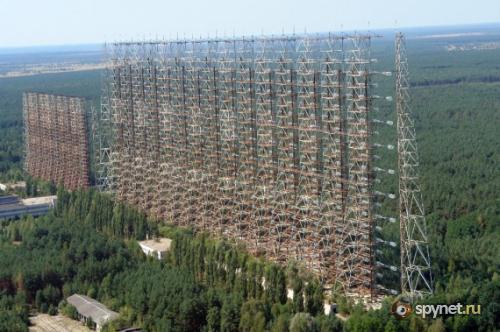
1. Balaclava (Crimea, Ukraine)
Classified submarine base in the small Crimean town of Balaklava - one of the largest military installations have been abandoned after the collapse of the USSR. Since 1961, under the mountain Tavros has a complex that contained ammunition (including nuclear) and performed the repair submarines. At the base of the docks could hide up to 14 submarines of different classes, and the entire complex was able to withstand a direct blow bomb power up to 100 kT. Abandoned in 1993, the object was pilfered for scrap locals. Without accurate maps to go on numerous tunnels base was dangerous, since there was a real danger of getting lost or fall into one of the numerous hatches (they are open, since the lid passed the local scrap metal).
In 2002 it was decided to make from the remnants of the submarine base in Balaklava museum complex dedicated to the confrontation during the Cold War.
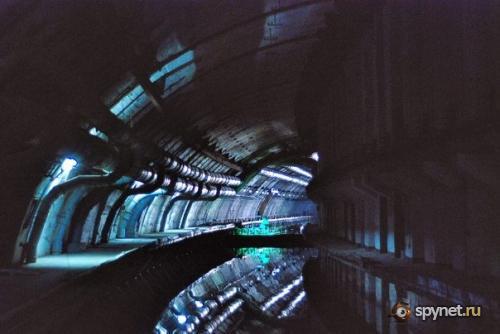
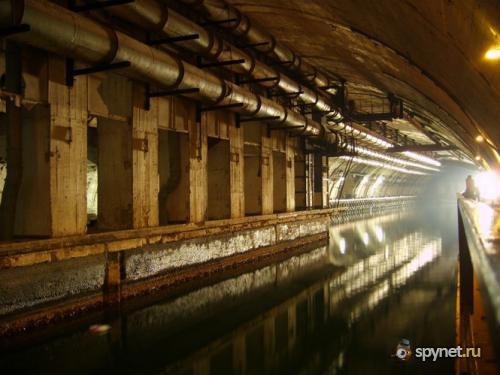
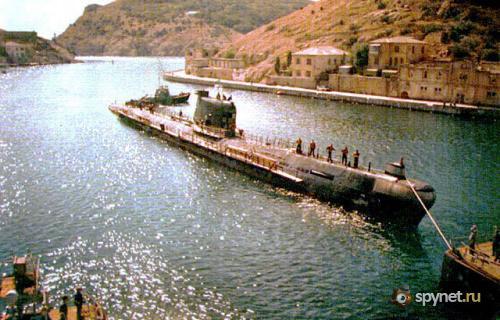
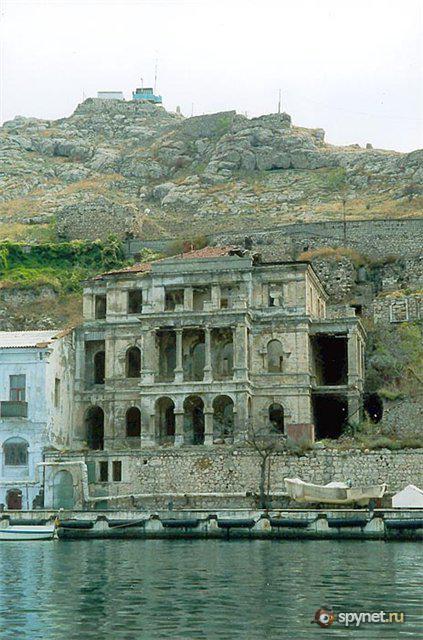
2. Abandoned missile silos (Latvia, Ķekava)
After the collapse of the empire of the young republic inherited a lot of military equipment, including scattered forest silos ballistic missiles. Not far from the capital of Latvia, are the remains of the missile complex "Dvina". Built in 1964, the object consisted of 4 silos depth of about 35 meters and underground bunkers. Much of the space is currently flooded, and a visit to the launcher without an experienced guide is not recommended. Also pose a risk of toxic residues and rocket fuel.
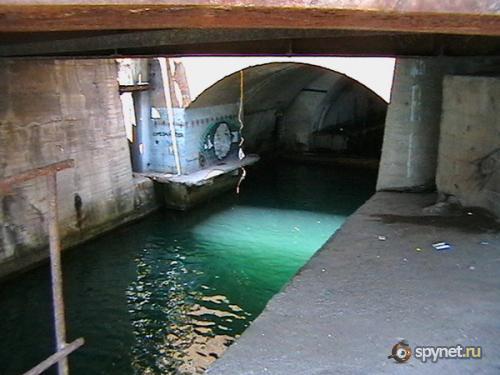
3. Giant excavators (Russia, Moscow region)
Until 1993 Lopatinsky phosphate mines was quite successful existing fields, which produces need for Soviet agriculture resources. And with the advent of the market economy abandoned quarry with giant excavator became a place of pilgrimage for tourists. Lopatinsky mine interesting place near Voskresenska. There are interesting things - giant excavators (abzatsery) and prehistoric fossils (ammonites and fragments of marine reptiles). Until recently it was possible to climb the abandoned abzatseram, but now they were dismantled and only actions that are protected.
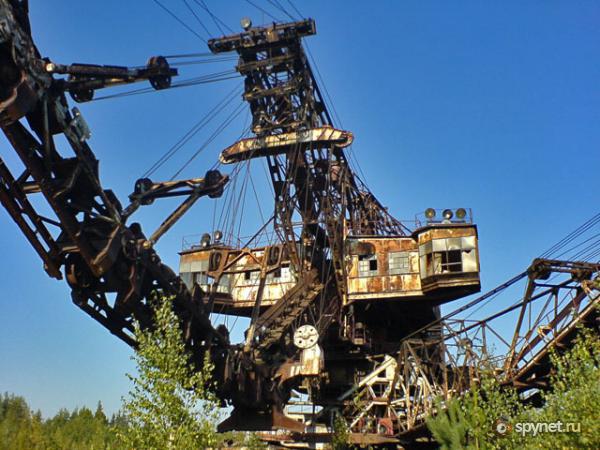
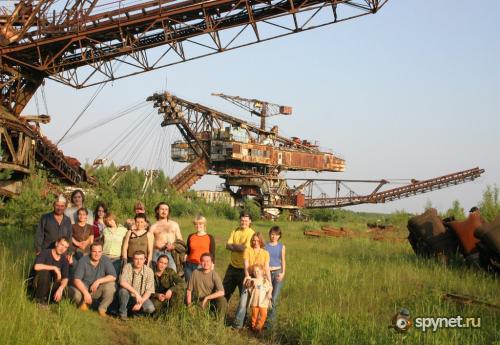
3. Giant excavators (Russia, Moscow region)
Until 1993 Lopatinsky phosphate mines was quite successful existing fields, which produces need for Soviet agriculture resources. And with the advent of the market economy abandoned quarry with giant excavator became a place of pilgrimage for tourists. Lopatinsky mine interesting place near Voskresenska. There are interesting things - giant excavators (abzatsery) and prehistoric fossils (ammonites and fragments of marine reptiles). Until recently it was possible to climb the abandoned abzatseram, but now they were dismantled and only actions that are protected.
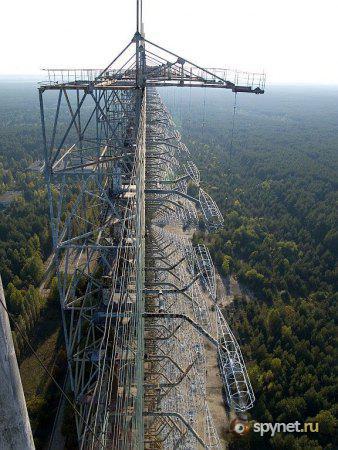
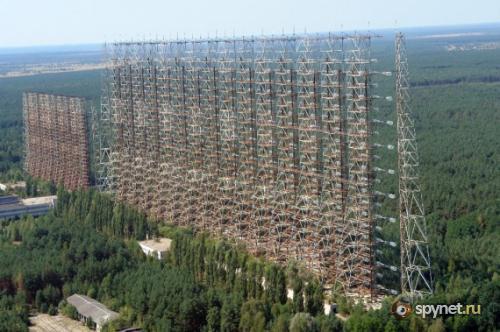
5. Marine City "Oil Rocks" (Azerbaijan)
Union needed the oil and in the 40s of the last century in the Caspian Sea 42 kilometers east of the Apsheron Peninsula began its sea mining. And around the first platform the city began to grow, also located on the metal trestles and embankments. In the heyday of the open sea, 110 km from Baku were built power plants, nine-storey building dormitories, hospitals, home culture, and even hlebzavod lemonade shop. Was in the oil and a small park with real trees. Oil Rocks - is more than 200 fixed platforms and length of streets and lanes of the city to the sea reaches 350 kilometers. But cheap Siberian oil made naval uneconomic and settlement started to come into disrepair. Today it is home to only about 2 thousand people.

6. Abandoned particle accelerator (Russia, Moscow region)
In the late 80s, the Soviet Union decided agonizing for the construction of a huge particle accelerator. Circular tunnel 21 kilometers in length at a depth of 60 meters, and is now near Protvino near Moscow - City of nuclear physicists. It's less than a hundred kilometers from Moscow to Simferopol highway. In the finished tunnel accelerator even began to import the equipment, but then came the series of political upheavals and domestic "Hadron Collider" was left to rot under the ground.
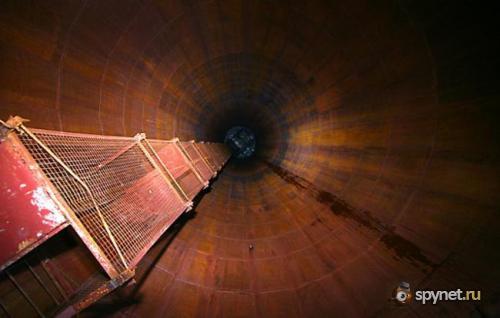
6. Abandoned particle accelerator (Russia, Moscow region)
In the late 80s, the Soviet Union decided agonizing for the construction of a huge particle accelerator. Circular tunnel 21 kilometers in length at a depth of 60 meters, and is now near Protvino near Moscow - City of nuclear physicists. It's less than a hundred kilometers from Moscow to Simferopol highway. In the finished tunnel accelerator even began to import the equipment, but then came the series of political upheavals and domestic "Hadron Collider" was left to rot under the ground.
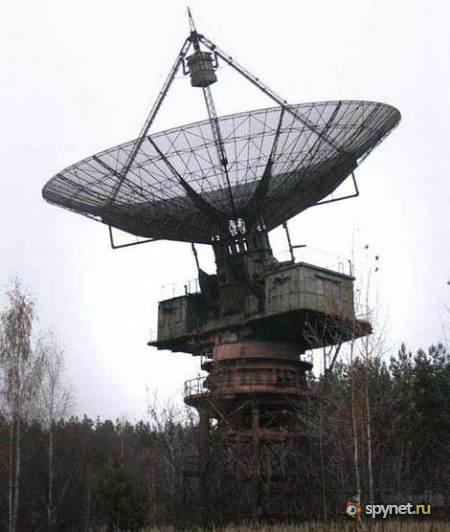

1. Balaclava (Crimea, Ukraine)
Classified submarine base in the small Crimean town of Balaklava - one of the largest military installations have been abandoned after the collapse of the USSR. Since 1961, under the mountain Tavros has a complex that contained ammunition (including nuclear) and performed the repair submarines. At the base of the docks could hide up to 14 submarines of different classes, and the entire complex was able to withstand a direct blow bomb power up to 100 kT. Abandoned in 1993, the object was pilfered for scrap locals. Without accurate maps to go on numerous tunnels base was dangerous, since there was a real danger of getting lost or fall into one of the numerous hatches (they are open, since the lid passed the local scrap metal).
In 2002 it was decided to make from the remnants of the submarine base in Balaklava museum complex dedicated to the confrontation during the Cold War.




2. Abandoned missile silos (Latvia, Ķekava)
After the collapse of the empire of the young republic inherited a lot of military equipment, including scattered forest silos ballistic missiles. Not far from the capital of Latvia, are the remains of the missile complex "Dvina". Built in 1964, the object consisted of 4 silos depth of about 35 meters and underground bunkers. Much of the space is currently flooded, and a visit to the launcher without an experienced guide is not recommended. Also pose a risk of toxic residues and rocket fuel.

3. Giant excavators (Russia, Moscow region)
Until 1993 Lopatinsky phosphate mines was quite successful existing fields, which produces need for Soviet agriculture resources. And with the advent of the market economy abandoned quarry with giant excavator became a place of pilgrimage for tourists. Lopatinsky mine interesting place near Voskresenska. There are interesting things - giant excavators (abzatsery) and prehistoric fossils (ammonites and fragments of marine reptiles). Until recently it was possible to climb the abandoned abzatseram, but now they were dismantled and only actions that are protected.


3. Giant excavators (Russia, Moscow region)
Until 1993 Lopatinsky phosphate mines was quite successful existing fields, which produces need for Soviet agriculture resources. And with the advent of the market economy abandoned quarry with giant excavator became a place of pilgrimage for tourists. Lopatinsky mine interesting place near Voskresenska. There are interesting things - giant excavators (abzatsery) and prehistoric fossils (ammonites and fragments of marine reptiles). Until recently it was possible to climb the abandoned abzatseram, but now they were dismantled and only actions that are protected.


5. Marine City "Oil Rocks" (Azerbaijan)
Union needed the oil and in the 40s of the last century in the Caspian Sea 42 kilometers east of the Apsheron Peninsula began its sea mining. And around the first platform the city began to grow, also located on the metal trestles and embankments. In the heyday of the open sea, 110 km from Baku were built power plants, nine-storey building dormitories, hospitals, home culture, and even hlebzavod lemonade shop. Was in the oil and a small park with real trees. Oil Rocks - is more than 200 fixed platforms and length of streets and lanes of the city to the sea reaches 350 kilometers. But cheap Siberian oil made naval uneconomic and settlement started to come into disrepair. Today it is home to only about 2 thousand people.

6. Abandoned particle accelerator (Russia, Moscow region)
In the late 80s, the Soviet Union decided agonizing for the construction of a huge particle accelerator. Circular tunnel 21 kilometers in length at a depth of 60 meters, and is now near Protvino near Moscow - City of nuclear physicists. It's less than a hundred kilometers from Moscow to Simferopol highway. In the finished tunnel accelerator even began to import the equipment, but then came the series of political upheavals and domestic "Hadron Collider" was left to rot under the ground.

6. Abandoned particle accelerator (Russia, Moscow region)
In the late 80s, the Soviet Union decided agonizing for the construction of a huge particle accelerator. Circular tunnel 21 kilometers in length at a depth of 60 meters, and is now near Protvino near Moscow - City of nuclear physicists. It's less than a hundred kilometers from Moscow to Simferopol highway. In the finished tunnel accelerator even began to import the equipment, but then came the series of political upheavals and domestic "Hadron Collider" was left to rot under the ground.







